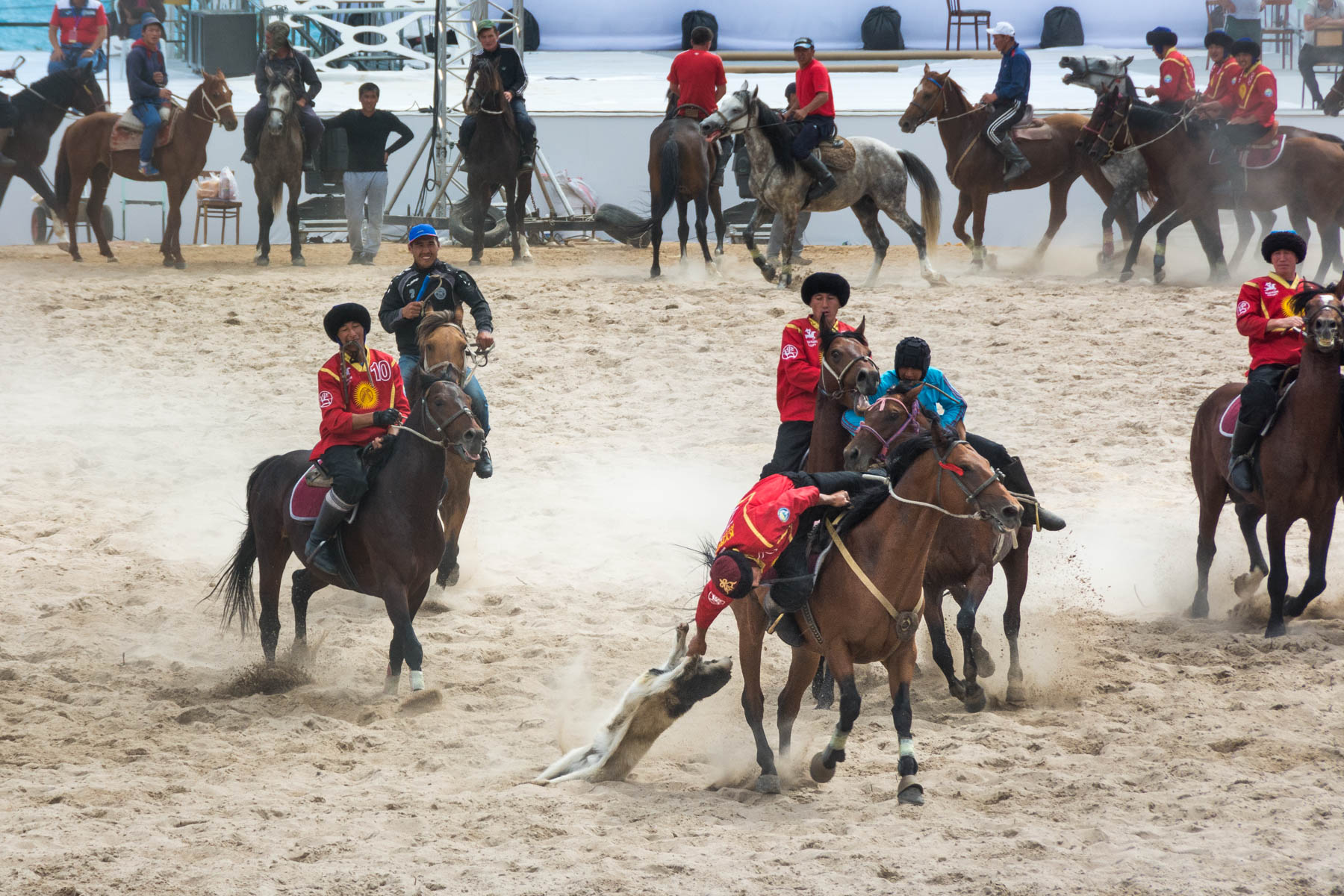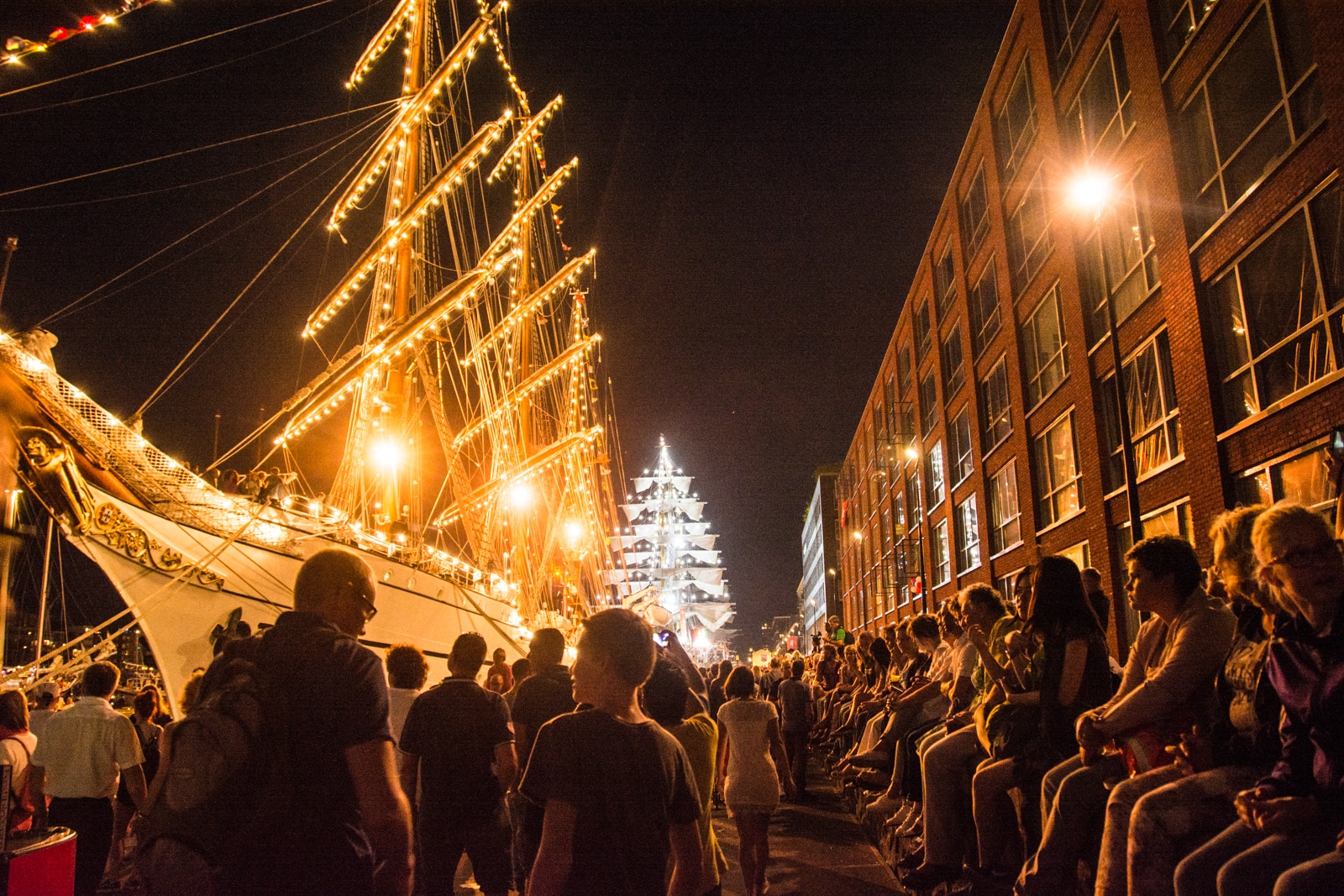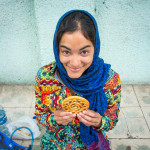Choosing a camera for your travels can be a complicated process… but it doesn’t have to be! Here are two simple pieces of camera advice for beginner travel photographers. Time to figure out which camera and lens is the best fit for you!
“I love your photos! What kind of camera do you use?”
If I had a dollar for every time I’ve been asked this question, I’d be drinking a cocktail in the infinity pool of a 5-star resort in Singapore right now, instead of sheltering in a cold and leaky Kazakh yurt in the pouring rain.
… okay, maybe not. But I’d at least have more money to my name while squatting in said yurt. And probably better socks.
This question appears in my Instagram inbox daily, and I give the same advice every time. Thanks to the rain and my woefully unprepared feet, I now have time to write an answer for everyone!
What camera do you recommend for travel photography?
If you’re asking this question, you’re probably interested in trying your hand at travel photography, and want to know what kind of camera you should invest in to take good travel photos. Good for you for doing some research! A good camera is a big–and expensive–first step into the world of travel photography, and you should make sure you do it right.
I personally shoot with a very dusty and much loved Nikon D7100, and almost always use a Nikon 18-200mm lens.
Update! I recently upgraded to a Sony a7RII mirrorless camera, and it’s all kinds of awesome. Read about my buying process and recommendations here.
But wait! Before you zip out to your nearest camera store/migrate to Amazon/send your camera-wallah to go get you these exact gadgets, allow me to spout a bit more wisdom:
The camera gear you need should be determined by the photos you want to take.
Are you a motivated soul, willing to carry around a heavy camera and a million lenses? A casual snapper wanting something of higher quality than an iPhone for portraits of people you meet? Someone with absolutely no idea what they want aside from sexy-A-F travel photos? (I feel you. Indecisive folks represent!)
Here are the two pieces of advice I’ve been sharing. They’re not brand-specific, so if you’ve already sold your soul to Nikon or Canon, this is still useful!
Read through, consider your needs, then send out your camera-wallah to get you some new kit.
(Or get your gear through the links here so I can buy warm socks next time I’m in civilization.)
2 essential pieces of camera advice for beginner travel photographers
1. Consider a mirrorless camera for travel photography
It’s noon on a scorching summer day, and you’re sweating buckets. You’ve been walking for hours trying to find that guesthouse that may or may not be on the road you’re on. You’re hot, exhausted, and wondering why your backpack feels like it’s filled with rocks, despite containing only clothes.
Oh, that’s right, you have a big DSLR in there, too.
It’s a feeling of death that I’m all too familiar with. Luckily, it’s a feeling you can avoid!
Got a new camera and want to know everything about all the fancy settings on it? Check out the courses by KelbyOne to become a pro!

Death by heat or death by DSLR?
Why should I buy a mirrorless camera for travel photography?
You’re likely familiar with the term “DSLR”: digital single-lens reflex. They’re the big, professional-looking cameras that people like to look legit with these days. They’re big because they contain a mirror–when you take a photo, the light goes through the lens, reflects off the mirror inside the camera, then hits the sensor that records the image.
But there’s a new technology in town! There are now cameras that can do everything a DSLR can, but don’t have a mirror inside–the light goes directly to the sensor. In practical terms, that means they’re half of the size and weight of a DSLR. Hallelujah!
Mirrorless cameras are often a bit more expensive than DSLR bodies, but they’re totally worth the extra investment.

So much smaller than DSLRs! Photo by Kārlis Dambrāns.
Not convinced you need a mirrorless camera?
Want good photos? Always have your camera ready at hand.
You’re much more likely to carry your camera with you everywhere you go if it’s light and easy to carry… which a DSLR is not. Mirrorless cameras, on the other hand, can easily fit into any backpack or handbag, even for serial overpackers. I used to carry around a mirrorless Nikon V1 everywhere until I broke it its time was up.
If a camera that won’t break your back sounds like a good idea, the Sony a6000 and Sony a6300 are highly recommended by professional travel photographers. For more information and recommendations on mirrorless cameras, check out this useful article from the Wirecutter.
Recommended mirrorless cameras
Got a new camera and want to learn how to make those pictures pop even more? Check out the courses by KelbyOne to learn everything about Lightroom!
But I don’t want a mirrorless camera
Oh, you fickle soul, you.
If a mirrorless camera is too taxing on your bank account, and you’re not interested in buying one secondhand, there are plenty of DSLR bodies that will do the trick.
DSLRs for beginner travel photographers
- Nikon: Nikon D3300
- Canon: Canon EOS Rebel T6
If you’re not interested in a mirrorless camera or а DSLR, I recommend Road Affair’s guide to the best travel cameras for more information on point and shoot cameras.
2. Invest more money in a good lens than in the camera body itself
People are always so quick to ask me which camera I use… but many entry-level camera bodies are so similar, there’s not much point in distinction! (Except for mirrorless vs. DSLR, of course.)
It’s all about the lens, baby
Lenses come in a million shapes and focal lengths, and make a much bigger difference in the final product than the camera body. When buying a camera, try to save some money by purchasing the camera body and the lens separately, rather than going for the “kit lens” often sold with the camera. Which lens you should buy depends on the kind of photos you like or plan on shooting.
Note: I’ve provided lens recommendations for Nikon and Canon DSLRs, and Sony and Fujifilm mirrorless cameras. Nikon and Canon are your best bet for DSLRs, but Sony and Fujifilm are undoubtedly ahead in the mirrorless race!

A wide angle is necessary to do justice to the absolutely insane interior of the Sheikh Lotfallah mosque in Esfahan, Iran.
Wide angle lenses – For landscape lovers and architecture fiends
If you’re going to be snapping shots of landscapes, architecture, and other vast vistas, or really like getting up close and personal with your subject, get a wide angle lens. In non-technical terms, wide angle lenses will allow you to more of your view into one photo, perfect for natural sights like mountain landscapes, or the interior of dazzling mosques in Iran.
Recommended wide angle lenses:
- Nikon DSLR: Sigma 10-20mm f/3.5 EX
- Canon DSLR: Canon EF-S 10-18mm f/4.5-5.6
- Sony mirrorless: Rokinon 12mm f/2.0 CS
- Fujifilm mirrorless: Fujinon XF 14mm f/2.8

Prime lenses ensure your snaps are still sharp in low light. Perfect for nighttime strolls and wandering through dark markets and crowded places.
Prime lenses – for people and lovers of nightlife
If you’re a fan of portraits, whether of yourself, your traveling companions, or that super-photogenic old guy posted on a bench over there, consider a prime lens. Prime lenses only have one focal range, so you won’t be able to zoom in or out, but they make up for it by functioning well in low light, and blurring the backgrounds of photos nicely. But how?
Technical terms: Prime lenses allow for lower f-stops (usually 1.2 – 1.8), or higher apertures. The depth of focus will be smaller, but a larger aperture means faster shutter speeds in low light.
Totally not technical terms: The hole the light goes through in the lens can open wider and let more light in, so you can shoot in low light conditions (ex. right after sunset, a dark interior such as a bar or concert) and still be able to get sharp photos. A low f-stop also means photos will have that cool blurred effect in the background, also known as “bokeh”.

See those nicely blurred lights in the back? That, dear friends, is bokeh.
There are also some good, cheap prime lenses available for most camera bodies, which means you can get one and play around with it without breaking the bank.
Recommended prime lenses:
- Nikon DSLR: Nikkor AF FX 50mm f/1.8D
- Canon DSLR: EF 50mm f/1.8
- Sony mirrorless: Sony 50mm f/1.8 OSS
- Fujifilm mirrorless: Fujifilm XF 35mm f/2.0 WR

A zoom lens was perfect for shooting at this game of kok buru, headless goat polo (yes, that is a thing), at the World Nomad Games in Kyrgyzstan.
Telephoto lenses – for nature lovers and photographers from afar
If stalking nature is your calling–I’m looking at you birdwatchers, safari-goers, voyeurs, and spies–you’ll be wanting a telephoto lens.
Telephoto lenses are fucking massive behemoths of a lens that you see professional sports photographers and hardcore birdwatchers using. They’ll let you zoom waaaaaay in on a tiny subject far away.
Be warned, they’re expensive, and not convenient to carry around at all–some are so big that they require an extra tripod just for the lens! Unless you’re planning on going on a trip specifically to watch animals, or are so averse to human interaction that you will only shoot photos of people from about half a mile away (again, I feel you), I don’t recommend buying a telephoto lens until you’re more familiar with your camera. Otherwise, you’re going to end up with a lot of blurry photos (or an aching back) because the more you zoom, the more light or stability you need!
Recommended telephoto lenses:
- Nikon DSLR: Nikkor 70-300mm f/4.5-5.6G ED VR
- Canon DSLR: Canon EF 70-200mm f/4L
- Sony mirrorless: Sony E 55-210mm f/4.5-6.3 OSS
- Fujifilm mirrorless: Fujinon XC 50-230mm f/4.5-6.7

I went from taking a wide-angle shot of the streets of Karachi, Pakistan to zooming in on this girl in a passing bus in the span of 0.1 seconds! Flexibility at its finest.
Multipurpose lenses – For flexibility in your shooting
For those, like me, who never have any clue what they’ll be snapping photos of unless it hits them in the face (sometimes literally), look for a lens with a wide focal range.
I already mentioned that I use a Nikon 18-200mm lens. That means that I can get a somewhat wide angle at 18mm, perfect for shooting landscapes, and slight telephoto functionality at 200mm, allowing me to creep on critters in nature when we’re out and about. The best of both worlds!
The importance of the wide focal range goes beyond simple convenience. Firstly, having such a wide range covered means that I rarely have to switch lenses. Most amateur photographers start out with something like an 18-55mm kit lens, and a 70-300mm “zoom” lens.
The problem: you’ll need to change lenses if, for example, you go from zooming in on a distant elephant to shooting a portrait of your safari companion. Every time you need to switch lenses you’ll…
- Lose time while fumbling with lenses, and often miss out on the opportune moment!
- Let dust into your camera body and lenses, which will collect on the sensor and make for all kinds of super fugly spots all over your photos. The only way to get those to go away is to clean the sensor, which is a decent undertaking and requires even more equipment. Pass.

The spots! They burn! So much of my time has been lost to editing dust spots out of my photos…
Convinced yet? Here are recommended multi-purpose lenses:
- Nikon DSLR: Nikkor 18-200mm f/4.5-5.6 VR
- Canon DSLR: Canon EF-S 18-200mm f/3.5-5.6
- Sony mirrorless: Sony 18-200mm f/3.5-6.3
- Fujifilm mirrorless: Fujinon XF 18-135mm f/3.5-5.6
Your next steps to becoming a better travel photographer
Check out your budget, and sift through the recommendations in this article. You have two decisions to make:
- What kind of camera body suits you? Mirrorless or DSLR?
- What kind of lens best fits your needs?
If you have any more questions, I try to answer every comment on every post. If not–happy snapping!
Yay transparency! There are affiliate links in this article. Basically, that means if you click on a link and eventually buy whatever was linked, we’ll get a small commission of the sale at no extra cost to you. We promise we’d never link you to anything we wouldn’t buy ourselves.







Probably just a habit but i would never go for mirrorless camera. I regret buying entry level DSLR DX too. If I could I would go for full frame DSLR.
Full frame is always ideal–Sony even has a full frame mirrorless version now (a7). But for starting photographers, full frame probably isn’t necessary.
As someone who’s been taking decent-but-not-amazing travel photos with a Canon powershot for years, I’m ready to move up to a DSLR. Even though I edit the sh*t out of my photos and can often get the result I’m looking for with a combination of manual settings on the camera and a few photoshop tricks, it’s getting to the point where I need to throw down on an equipment upgrade. I really appreciated the technical advice in here as well as the examples of photos you’ve taken with different cameras. I definitely hear you on the idea of going mirrorless for backpackers and long-term travelers, but it’s such a slippery slope with cameras. You always want to get something just a *little* bit better than what you already have. 🙂
Great photo of you in the yurt, by the way!
Haha, yurt life is my calling!
Most of the mirrorless cameras available are definitely a step up from a Canon Powershot 😉 Taking a step up definitely requires a bit of consideration, but you’ll be happy once you did. You’ll still have to edit, but the results will be that much better afterwards!
Great info and so much to choose from! I think a good camera is such an important and amazing investment to capture travel memories!
Georgia | http://www.bohemianbythesea.com
Indeed–great photos are always appreciated later on.
These are some great tips! I went a totally different route and found myself with a ‘bridge’ camera – takes awesome photos but is still small enough to stick in a purse! I couldn’t agree enough that it’s all about understanding how you will use it and get the most out of it. If I had to lug around a big DSLR, I’d end up just using my iPhone :/
Yep, we constantly hear of people investing in big DSLRs so they feel more professional, only to have them sit and collect dust because they’re too heavy.
Which camera did you end up choosing for yourself?
I’ve been thinking about a new camera lately. The big problem is that I can’t choose if I want a mirrorless or DSLR camera. I like Nikon D3300 but I’m a backpacker and I need to consider also the size.
Definitely mirrorless then! You can get the same quality as a D3300 for half of the size. Your back will appreciate it 😉
Just in time because I am looking for some advice in buying new camera! I have been using DSLR until one time I felt yeah….why must I bring this such heavy tools for hiking. It’s such a pain. I think I will start saving to get mirrorless one. 😀
Ugh, yes–walking up mountains while carrying a pack AND a massive camera makes me feel quite foolish quite often. Mirrorless will be so much more refreshing.
Your photos are gorgeous, and your advice is very candid. I completely agree to perhaps try going with a mirrorless! I use sony a6000 and love it to pieces! I actually wrote a similar piece on my blog about this as well. Thank you for sharing! 🙂
Yep, I’ve heard loads of people rave about the a6000, and I’m considering getting one myself 🙂 I’ll check out your blog!
This is amazing! Absolutely great tips (from a freelance photographer here) – I also use a Nikon D7100 and my favourite lenses are my Nikkor 35mm f1.8 and my Tamron 10-24mm – both great lenses and the Tamron is great value for money! I LOVE your photos from Iran – incredible!
Thanks Penelope! I’m currently in the market for a new lens, and was considering something like the Tamron — it’ll force me to get up closer to subjects more often! It’s good to hear that you get good use out of them 🙂
I would recommend Sony Nex 5. Amazinf light camera that gives you awesome quality pictures.
Thanks for the rec Liliia! The Sony Nex 5 is a nice alternative to the a6- series. We like the specs of the a6000 more, but both would be excellent choices 🙂
Then congratulations with your new camera!! 🙂
OMG. Thank you for breaking this down into an easy-to-understand post! I didn’t even know DSLRs have a mirror in it…and that “mirrorless” cameras simply meant that they don’t have a mirror! This is great – bookmarking as I’m looking to upgrade!
Haha, no problem Flo! Camera discussions can get so technical and use so much terminology that most people don’t know. It’s annoying to sift through when trying to make a decision, so we thought it would be good to simplify things for the average consumer 🙂
Hopefully things are a little clearer for you now. Good luck with choosing your next camera!